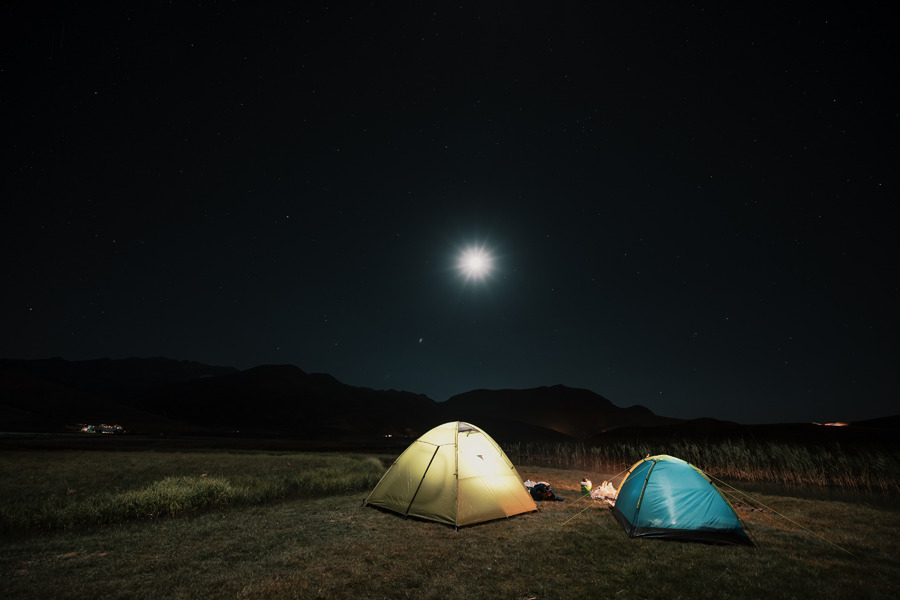If the thought of spending the night outside amidst snow and trees enchants you, you might just be a cold-weather camper. Camping in winter can seem futile because you don’t get to enjoy the sun or swim in creeks, but it can actually be a very satisfying experience. To make the adventure all the fun, you can use a cold weather camping checklist. This document will help ensure you carry everything you need for your cold-weather camping trip and keep your luggage weight to a minimum.
What Is a Cold Weather Camping Checklist?
A cold weather camping list is a specialized catalog featuring all the gear you need for a camping trip during cold months. It covers everything from weather-appropriate shelter and clothes to food and medical supplies.
The Ultimate Cold Weather Camping Checklist
Camping during the summer is a breeze because all you need to remember to do is stay hydrated. When camping in freezing weather, however, you need to protect yourself against freezing temperatures, which could be dangerous. You will need the following items:
1. Shelter
- 4-season tent: These tents are designed to provide extra insulation and warmth. Their rigid construction also makes them impenetrable to powerful winds and snow loads.
- Sleeping bag
Tip: Consider getting a mummy sleeping bag instead of a regular one. This type of sleeping bag hugs your body more tightly and comes with a hood and drawstring for your neck and head. All these features prevent heat loss and keep you warmer.
- Sleeping bag liner: It can add an extra layer of warmth and help keep your sleeping bag lint-free and clean during your trip.
- Insulated sleeping pad: A thick, well-insulated sleeping pad will create a moisture and warmth barrier between you and the cold ground.
2. Food and Water
Did you know that your body needs more calories during cold months to stay warm? This means that you will need to pack sufficient food items. Consider carrying the following:
- Energy bars
- High-calorie snacks
- Quick-to-cook foods like instant noodles, refried beans, and rice.
- Instant coffee packs
- Sugar, salt, and other spices
- Candy bars
- For water, you can carry water bottles and use snowmelt. Only use white snow, not black, brown, or yellow, because this indicates it is safe to drink.
Note: Boiling snow to make snowmelt will produce awful-tasting water so consider a different purification method.
3. Clothing and Footwear
When exposed to cold weather, the key to staying warm is dressing in layers and keeping the warmth in and the moisture out. Pack the following:
- Base Layer: Your base layers should keep you dry, so they should be made of materials with moisture-wicking ability.
- Mid Layer: This layer of clothing should insulate your body against the cold and trap heat next to your body, keeping you comfortable.
- Outer Layer: This final later should keep rain and wind out.
Tip: Pick a rain jacket with some breathability so that the moisture is drawn from your body by the base layer has a way to escape, and you are not left soaking in sweat.
- Sunglasses
- Warm Hat
- Socks
- Gloves
- Boots
4. Navigation Equipment
While your phone is likely equipped with GPS, cold temperatures can drain your battery faster than usual. It is good to bring the following backups:
- Topographical map
- Compass
- Area guide
- Binoculars
5. Heat Source
Pick one of the following heat sources for your trip:
- Camp stove
- Portable fire pit
- Tent heater
6. Additional Items
By now, you have all the essentials you need to have a great cold weather camping experience. Consider adding the following items to your luggage:
- Tent poles
- Headlamp
- First aid kit
Note: Learn how to perform first aid for some common cold-weather injuries, like hypothermia and frostbite. You should also learn to disinfect and bandage wounds.
- Shovel: You can use this to create wind barriers around your tent or a snow kitchen. Try a small, light, compact, and collapsible model that fits in your pack easily.
- Toiletries: Some soap and a roll of toilet paper should do, but you can also carry shampoo and moisturizing oil.
- Camera
Frequently Asked Questions (FAQs)
Experts generally consider 30 to 40 °F (-1 to -4 °C) too cold for camping in a tent. This is especially true if you do not have the right gear or are inexperienced in cold weather camping. The safest temperatures are around 95 °F during the day and low 80°F at night
Is it warmer to sleep in a car or tent?
It is warmer to sleep in a tent than in a car. This is because tents are smaller and, thus, get warmer faster. They also have double the insulation of cars and are made from fabrics designed to keep out the cold. This is unlike aluminum, which is what cars are made of.
Yes, you can survive winter in a tent as long as you prepare adequately. Pick a durable tent made of water repellent and insulated material to keep warmth in and condensation and moisture out. You will need more gear than usual, so a large tent is also important. Remember to bring the following:
ᐅ A warm sleeping bag
ᐅ Mid-weight base layers
ᐅ Fleece pants
ᐅ Two sleeping pads
ᐅ Warm pants
ᐅ A stove suitable
ᐅ A puffy coat
ᐅ A waterproof jacket
Yes, you can use a tent heater that is specifically designed for use in a tent. It should be safe to light in a confined space as long as you adhere to the user manual. That said, avoid gas heaters unless your tent is well ventilated. Also, remember to keep your heater away from flammable surfaces like sleeping bags and tent walls at all times.
Conclusion
The ultimate cold weather camping checklist is also customizable. While most of these items are essential, others can be luxuries depending on your camping style. Feel free to pack more or fewer items than indicated on this list as long as you remain mindful of weight. If you are bringing your car, you generally have more wiggle room when it comes to weight. However, backpackers should keep their luggage to a minimum. The key is to stay mobile and light so you can limit the number of calories you burn. That said, happy cold weather camping!








